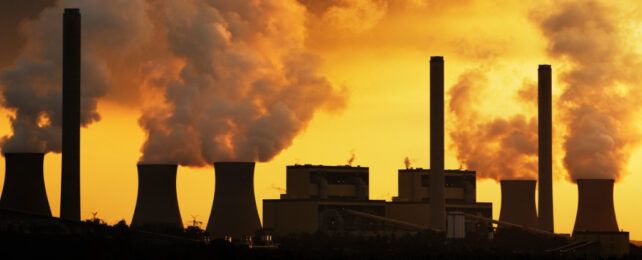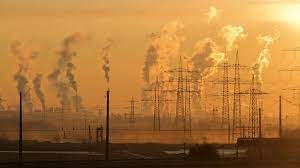
Greenhouse gas levels surged to a new record in 2023, committing the planet to rising temperatures for many years to come. CO2 is accumulating in the atmosphere faster than any time experienced during human existence.

Our CO2 emissions are warming the planet and making life uncomfortable and even unbearable in some regions.

Today's rate of atmospheric carbon dioxide increase is 10 times faster than at any other point in the past 50,000 years, researchers have found through a detailed chemical analysis of ancient Antarctic ice.

These jaw-dropping videos demonstrate precisely where the majority of this critical greenhouse gas is being released, and how that changes over the course of a single year.

Starting around 60 km up, in the outermost layers of atmosphere carbon dioxide actually cools the atmosphere, causing it to shrink and contract. A cooling and shrinking MLT will lead to an increase in the longevity of space debris at higher altitudes

The increase in global CO2 emissions of over 2 billion metric tons in 2022 is the largest in history in absolute terms, more than offsetting the previous year's pandemic-induced decline.

The global average of carbon dioxide concentrations hit a new high of 413.2 parts per million last year, according to the WMO report. It was higher than the annual average over the last decade, despite a 5.6% drop of CO2 due to Covid.

Scientists from Scripps and the NOAA reported that levels of atmospheric carbon dioxide peaked in May, reaching a monthly average of nearly 419 parts per million.

The concentration of atmospheric CO2 surged past 420 parts per million for the first time in recorded history this past weekend, according to a measurement taken at the Mauna Loa Observatory on Hawaii.

The industrial slowdown due to the COVID-19 pandemic has not curbed record levels of CO2. Carbon dioxide levels saw another growth spurt last year past 410 parts per million on average.

The world hit another new record high for heat-trapping carbon dioxide in the atmosphere, despite reduced emissions because of the coronavirus pandemic, scientists announced Thursday.

For the first time since humans existed on earth, carbon dioxide has exceeded 415 parts per million.

A new study finds we are pumping CO2 into the atmosphere at a rate nine to 10 times higher than the greenhouse gas was emitted during the Paleocene-Eocene Thermal Maximum, a global warming event that occurred 56 million years ago.

Renewable energy capacity has hit record levels and global coal use may have already peaked. But the world's CO2 emissions from fossil fuels increased in 2018, and the trend places global warming targets in jeopardy.

Scientists have discovered that increased levels of atmospheric carbon dioxide may lead to lesser amounts of nutrients, such as essential B vitamins, in rice.